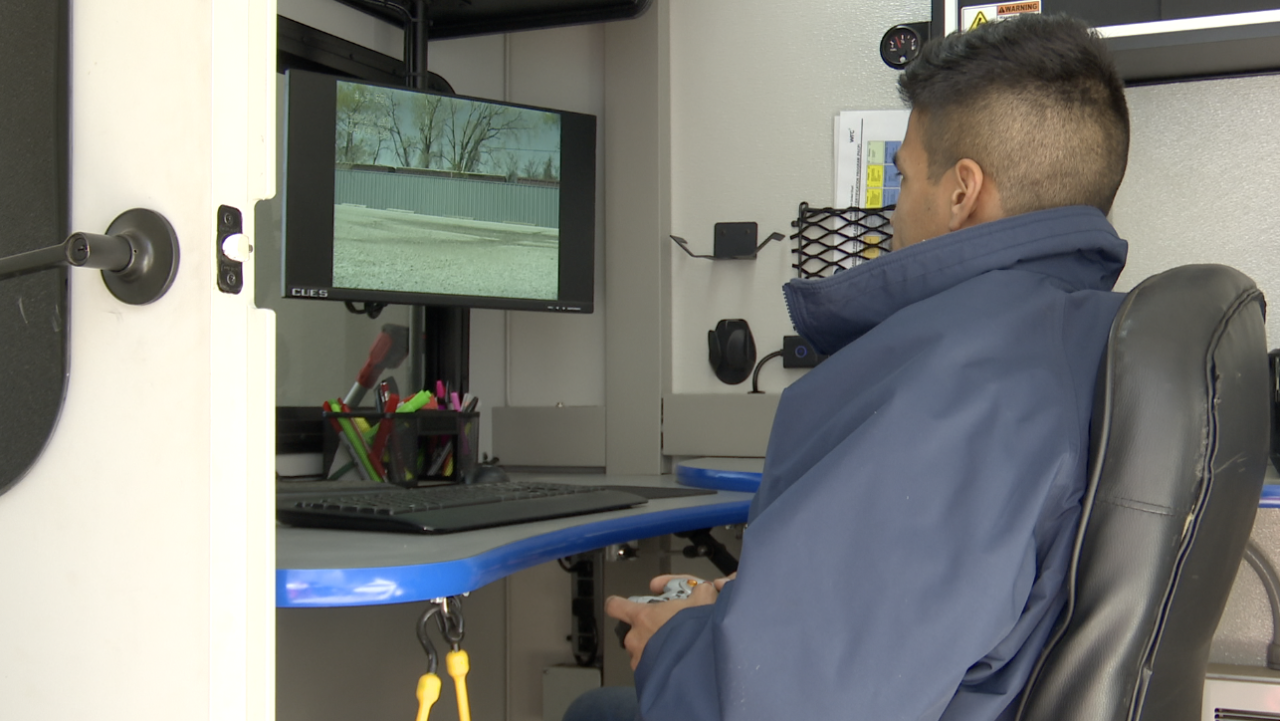TULSA, Okla. — A robot deployed by the City of Tulsa was a critical piece of technology used in the recovery of a missing woman’s body from a storm drain on April 2.
The Pipe Ranger has been part of the Maintenance and Storm Water Group’s toolkit in some form or another for about 40 years.
Roy Teeters, the division manager of the stormwater group, said the technology has aided in a variety of projects and significantly improved their work process.
“One of the biggest benefits of these cameras is it keeps our employees safe,” said Teeters. “Decades ago, you used to have crawl up the sewer lines to find what was wrong with it, and now we don’t have to climb up it we’re able to send the camera.”
The city lent its robot to search efforts earlier this week, which was instrumental in locating the missing woman’s body.
Here's that story:
That was the first time the pipe ranger had been used in a recovery operation, but Teeters expects more will likely follow.
“Part of that was because we have the storm sewer atlas that shows where all the storm lines are,” said Teeters. “With the police and fire knowing that we have this improved technology, then I expect there will be times that they call us more often than they did in the past because this did turn out to be real useful. It helped the fire department identify where the recovery needed to take place, and it kept them from having to expose their firemen to crawling up pipes and just manually searching.”
Teeters said the device's evolution in just the last ten years made all the difference. The cameras on the pipe ranger initially could not move, tilt, or zoom.
The updated cameras can give a 360-degree view of an area – Teeters said they are mostly used to locate defects in pipes.
“An example would be, we're at 71st and Memorial, and we’ve got a storm sewer line that’s not flowing like it should be, and we’ve got to find out why,” said Teeters. “We send the camera up there to identify what the problem is and to accurately locate the area of the problem so when we start excavating, we’re excavating in the right spot.”
The device as a whole – camera, and wheels – are operated through a remote control. Crews above ground use the controller to move the pipe ranger and get a visual on their monitors in a trailer that the robot is powered through.

Depending on the designated area, three different-sized robots can roam a pipe anywhere from 8 to 46 inches. Teeters said crews will manually inspect anything larger than 46 inches.
While Teeters predicts more missions for the pipe ranger, he does not foresee the device being asked to perform any additional tasks.
Stay in touch with us anytime, anywhere --
- Download our free app for Apple, Android and Kindle devices.
- Sign up for daily newsletters emailed to you
- Like us on Facebook
- Follow us on Instagram
- SUBSCRIBE on YouTube





